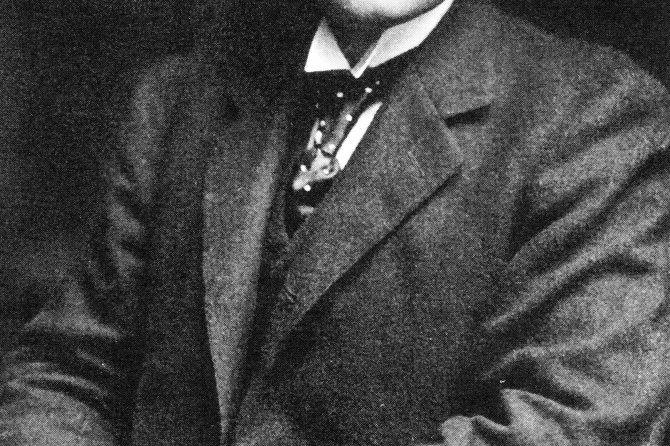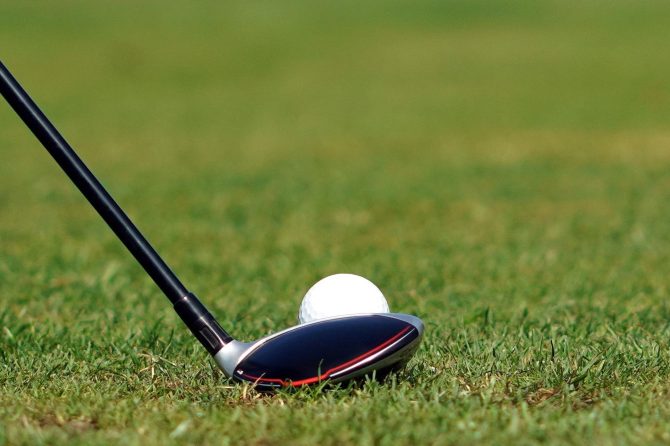Enhancing Golf Performance Through Advanced Equipment
The connection between the quality of golf equipment and athletic performance has been a significant focus in sports science, especially in golf, where precision is crucial. This article delves into the academic insights regarding essential golf gear that can substantially improve a player’s performance on the course. As technology continues to advance, the implications for club design, ball aerodynamics, and material composition reveal not only the mechanics of play but also the psychological factors that affect a golfer’s confidence and decision-making. Understanding these elements empowers players to make informed equipment choices, ultimately leading to better performance outcomes. By exploring the latest research and innovations in golf gear, we aim to highlight how the right equipment can act as a catalyst for enhanced performance, aligning with a golfer’s skills and physical capabilities. This exploration advocates that an informed approach to equipment selection is not just favorable but essential for maximizing one’s potential in the sport.
Material Technology in Golf Club Design
The advancement of golf equipment is closely linked to innovations in material technology, which have transformed club design and performance attributes. Traditionally, clubs were made from materials like wood and iron, which, while effective, limited design precision and flexibility. In contrast, modern clubs utilize cutting-edge materials such as titanium, carbon fiber, and various alloys, allowing engineers to enhance performance aspects like weight distribution, durability, and aerodynamics. This evolution has led to significant improvements in distance, accuracy, and player comfort on the course.
The integration of advanced materials like **graphene** and **nanotechnology** has revolutionized golf ball manufacturing. These advances lead to **increased durability**, **better spin control**, and **enhanced flight stability**. For instance, the use of graphene in the Callaway Chrome Soft golf ball has demonstrated significant improvements in energy transfer during impact, providing players with greater control over their shots. Additionally, the careful selection of materials significantly affects the weight and feel of golf clubs, where the choice of substances enhances overall responsiveness and player comfort.
The evolution of golf equipment represents a meaningful intersection between technology and athletic performance. Recent advancements in club design, which encompass innovative materials and aerodynamic principles, have transformed the way players approach the game, aiming to enhance overall gameplay and enabling golfers to achieve greater precision and consistency. Moreover, understanding how material selection influences the design of various club types—from woods to putters—offers players deeper insight into optimizing their equipment for improved play.
The integration of data analytics tools in club fitting and performance tracking cannot be overlooked. Technologies like launch monitors and swing analyzers provide real-time insights into a golfer’s swing dynamics, enabling tailored adjustments. This custom approach helps golfers to:
- Identify Weaknesses: Target specific mechanics for betterment.
- Enhance Technique: Utilize data to refine swings and improve consistency.
- Track Progress: Monitor changes over time to ensure ongoing development.
Furthermore, devices such as launch monitors and swing analyzers provide real-time data on various metrics, including angle of attack, club path, and ball speed. **Utilizing this data empowers golfers to make informed decisions regarding equipment adjustments and swing modifications.** For instance, a player may discover through analysis that a specific driver leads to a more favorable launch angle, thus prompting a switch or adjustment to enhance distance. The continuous feedback loop established through technology not only fosters a deeper understanding of individual performance but also encourages constant equipment optimization, ultimately leading to enhanced gameplay.
The introduction of graphite shafts in the 1970s marked a turning point in the golf industry, providing a lighter option to steel. This material not only reduces the overall weight of clubs but also facilitates greater swing speed and control. Additionally, the use of advanced composites in clubheads has improved forgiveness and energy transfer during impact, which is vital for both amateur and professional players aiming for consistent ball flight and minimizing mishits. Moreover, recent advancements in swing analysis technologies, such as TrackMan and Flightscope, provide golfers with detailed insights into their performance metrics, enabling targeted improvements in technique and equipment selection.
| Material | Benefits | Applications |
|---|---|---|
| Titanium | Lightweight, high strength | Driver heads, iron faces |
| Graphite | Flexibility, vibration dampening | Shafts |
| Carbon Fiber | High performance, low weight | Clubheads, shafts |
As golf technology progresses, the integration of advanced materials in club design will be crucial for enhancing performance across all skill levels. Furthermore, the ability to customize materials based on player preferences exemplifies how modern developments can facilitate greater personalization and effectiveness, adapting to evolving player requirements and competitive standards.
Custom Fitting: Enhancing Player Performance and Consistency
Custom fitting aims to adapt golf clubs to the unique physical characteristics and playing styles of individual golfers, leading to improved performance metrics. Research indicates that proper fitting can yield significant enhancements in several areas:
- Accuracy: Fitted clubs align more closely with a player’s swing mechanics.
- Consistency: Enhanced specifications help achieve uniform ball contact.
- Distance Control: Tailored weight distribution optimizes swing dynamics, significantly affecting shot distance.
Studies reveal that custom fitting not only benefits advanced players but also provides ample advantages for golfers of all skill levels. As an example, data from various golf organizations indicate that around 87% of golfers who undergo custom fitting experience a reduction in their handicap by at least 10%. This improvement is particularly notable among higher handicap golfers, who frequently see even greater gains due to better-fitting equipment that meets their specific needs.
Moreover, the psychological benefits of custom fitting are significant. Golfers using well-fitted clubs report increased confidence and comfort during their rounds. The consistent feel of properly fitted clubs enhances the overall playing experience and can lead to greater engagement with the sport. With advancements in fitting technology, golfers can now access precise measurements and tools that were previously unavailable, ensuring they have the best equipment to reach their potential on the course.
The Role of Ball Design in Spin and Distance
The design of a golf ball plays a crucial role in determining its spin and distance, both of which are vital for performance on the course. Recent studies emphasize the significance of **dimple design** in optimizing aerodynamic properties, which directly influence how a ball behaves in flight. The size, shape, and arrangement of dimples can modify airflow, thereby affecting lift and drag. By adjusting these factors, manufacturers can create balls that either enhance spin for shorter approaches or minimize it for maximum distance off the tee.
Additionally, the **material composition** of the ball significantly impacts its performance characteristics. The interaction between the cover material and the core can either enhance or limit its ability to generate spin. A softer cover may increase spin rates, providing greater control on the greens, while a firmer core can promote higher speeds and longer distances. Striking a balance between these attributes is essential, as players must consider their style and specific course conditions when selecting their equipment.
Understanding the **impact of clubhead design** on ball interaction further enriches this discussion. Technological advancements in club design, such as the face properties and geometry, can definitely help mitigate undesirable spin effects, especially on off-center hits. Innovations like the bulge in drivers aim to reduce sidespin and enhance directional accuracy. Therefore, when selecting new golf balls, players should also consider how their clubs will interact with these designs to ensure optimal performance in various situations.
Evaluating Launch Monitors for Swing Analysis
Launch monitors have transformed swing analysis by providing precise, real-time data that enhances golfers’ understanding of their performance. These advanced devices measure critical metrics such as ball speed, spin rate, and launch angle. This invaluable feedback allows golfers to identify areas for improvement and make informed adjustments to their technique. The clarity of available metrics fosters a systematic approach to practice, bridging the gap between coaching and individual execution.
The effectiveness of launch monitors is highlighted by their ability to analyze various swing elements with unmatched accuracy. Key advantages include:
- Immediate Feedback: Instant data enables golfers to adjust their swings in real-time, enhancing practice sessions.
- Quantitative Analysis: Numerical data allows for performance comparisons over time, promoting measurable improvement.
- Customization: Coaches can tailor drills based on specific launch monitor metrics, refining the player’s unique style and addressing individual weaknesses.
To illustrate the impact of launch monitors, the following table summarizes the primary features of various models:
| Model | Key Metric | Ideal For |
|---|---|---|
| FlightScope Mevo | Launch Angle | Beginners |
| TrackMan 4 | Spin Rate | Advanced Players |
| Garmin Approach G80 | Ball Speed | All Levels |
The ongoing advancement of launch monitor technology signifies a growing trend towards personalized coaching and data-driven practice. As golfers increasingly adopt these tools, their understanding of the game improves significantly, leading to enhanced performance and overall enjoyment of the sport.
The Importance of Equipment Maintenance for Optimal Performance
Maintaining golf equipment is crucial for achieving excellence on the course. **Regular maintenance** not only prolongs the lifespan of gear but also directly affects golfers’ performance. Well-maintained clubs, balls, and other equipment ensure consistency in play, which is vital for developing a reliable swing and accurate shots. The precision mechanics of modern golf equipment require golfers to commit to routine checks and adjustments, such as:
- Inspecting grip conditions for optimal control
- Checking club faces to maintain proper spin
- Ensuring shafts are free from wear or damage
Moreover, the **hygiene of equipment** significantly impacts performance outcomes. Dirty or poorly maintained clubs can lead to suboptimal ball contact, resulting in erratic shots. Regular cleaning not only preserves the aesthetic appeal of gear but also enhances functionality by allowing for better contact and spin on the ball. To streamline the cleaning process, golfers can adopt the following strategies:
- Using appropriate cleaning solutions that are safe for clubs
- Investing in brushes specifically designed for golf clubs
- Establishing a cleaning routine after each practice or game
Ongoing **assessment and upgrading** of equipment based on performance analytics can lead to significant improvements. With technological advancements, many players now rely on data-driven insights to determine when to replace or upgrade their gear for enhanced performance. This practice allows players to remain competitive by utilizing state-of-the-art equipment that matches their evolving skills. Key considerations in this assessment include:
- Analyzing swing data from technology-integrated clubs
- Regularly reviewing performance metrics with a golf coach
- Staying informed about new equipment technology trends
Looking Ahead
The careful selection and application of advanced golf equipment are essential for golfers aiming to enhance their performance on the course. By thoroughly understanding the interplay between technology and gameplay, we can recognize how precision-engineered gear significantly influences various aspects of play, from swing mechanics to overall scoring. This exploration has underscored the importance of tailored equipment and the benefits of innovations such as custom fitting and smart technologies, which empower golfers to refine their skills and adapt to their individual styles.
By integrating these advanced insights into practice, players can unlock the full potential of their equipment, ultimately leading to improved consistency and confidence in their game. As we continue to investigate the evolving relationship between equipment advancements and performance outcomes, it becomes increasingly evident that informed choices in gear are basic to competitive golf. Aspiring golfers, coaches, and enthusiasts are encouraged to stay updated on technological trends and research findings, as they hold the key to achieving excellence on the fairways and greens.





